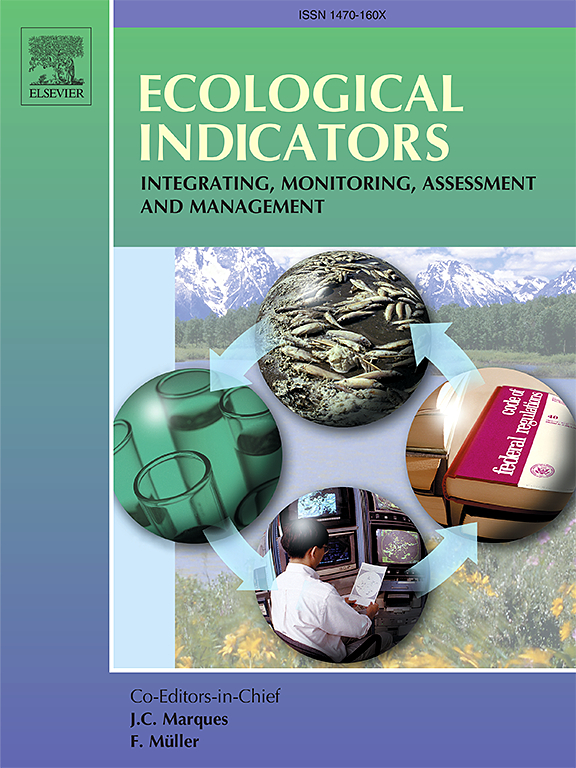Spatiotemporal heterogeneity of ecosystem service interactions and their determining thresholds across distinct climate zones in the temperate desert steppe of northern China
Li, Xin , Li, Xiangdong , Li, Xiaoqian , Dong, Zhi , Chen, Xinchuang , Guo, Jianying , Liu, Hongxiao
2025-01-01 null null 170(卷), null(期), (null页)
Understanding the mechanisms of ecosystem services (ESs) interactions and climate zone differences, alongside quantifying key determinants and thresholds, is essential for regional management. However, the absence of tailored strategies often overlooks these climatic variations, hindering effective regional problem-solving. We selected the temperate desert steppe in northern China, which is the transition zone from a semi-arid to arid climate. Then the food and pasture supply (FP), carbon sequestration, biodiversity maintenance, soil retention, wind and sand stabilization, water conservation, water yield, air purification, and entertainment and leisure (EL) were quantitatively assessed. The results indicated that ESs' distribution in the desert steppe exhibited significant climate differences, with the total ESs in the semi-arid zone superior to those in the arid zone. However, the trade-off among ESs in the semi-arid zone was more severe, with more complex and sensitive determinants attributable to anthropogenic disturbance. Moreover, with the increase in urbanization, anthropogenic disturbance was expanding into the arid zone. The strengthening of trade-off effects in the arid zone occurred primarily in most ESs related to FP and EL. The arid zone was affected by natural factors such as the proportion of barren land, temperature, precipitation, and vegetation index, while the semi-arid zone was affected by the landscape pattern index, population density, and GDP. The main determining indicators had an obvious threshold and the negative effect was strengthened beyond the threshold. In the arid zone, the thresholds were the proportion of barren land (69 %), precipitation (138 mm), and NDVI (0.48). In the semi-arid zone, the proportion of barren land was 43 %, NDVI was 0.38, and the largest patch index was 87.4 %. This study provides support for policymakers' decisions in the formulation of ecological control objectives and restoration of the temperate desert steppe ecosystem.
相关推荐
- A post-processed carbon flux dataset for 34 eddy covariance flux sites across the Heihe River basin, China [2025-01-01]
- Mass loss of Bayi Glacier in the Heihe River Basin revealed by ground-penetration radar measurements from 2006 to 2023 [2025-01-01]
- Field and laboratory study on the distribution, fate and transport of polycyclic aromatic hydrocarbons in the loess porous medium at a refinery polluted site: Understanding the soil-groundwater interface [2025-01-01]
- Spatiotemporal Variability of Soil Erosion in the Pisha Sandstone Region: Influences of Precipitation and Vegetation [2025-01-01]
- Applicability of a Modified Gash Model for Artificial Forests in the Transitional Zone between the Loess Hilly Region and the Mu Us Sandy Land, China [2025-01-01]



